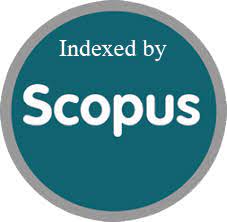Resilient Data Protection in Fog-Cloud Environments Using Fragmentation and Advanced Cryptography
DOI:
https://doi.org/10.63682/jns.v14i14S.3425Keywords:
Cloud computing, Servers, Secure Storage, Privacy, Xor-CombinationAbstract
Unless users use a cloud storage service for their sensitive data, the storage service is excellent. Once data is outsourced to the cloud, the cloud server has complete access to and control over the user's data. It can have the capacity to read and search user data. Emerging cyber threats to cloud storage include data loss, malicious modification, and privacy invasion. Fog server-based three-layer architecture for safe storage has just been introduced. According to the design, some data will be saved on the user's local system, in the cloud, and fog. A fraction of the data in the cloud and their unique hash method require additional processing and storage. An approach to cloud storage based on fog is used in this study. In that technique, data is divided into many blocks using the XOR operator, and these multiple blocks are then combined into two or three blocks. As a result, we increase the security of the fog server for a resilient fog-centric cloud computing architecture and we improve the cryptosystem to secure data without revealing any information from it using this technique. Data is protected from unauthorised access, modification, and deletion via the fog-centrioud storage system.
Downloads
Metrics
References
. B.Martini and K.-K. R. Choo (2014), "Distributed file system forensics: XtreemFS as a case study," Digital Investigation, vol. 11, no. 4, pp. 295-313.
C. Hooper, B. Martini, and K.-K. R. Choo (2013), "Cloud computing and its implications for cybercrime investigations in Australia," Computer Law & Security Review, vol. 29, no. 2, pp. 152-163.
D. J. Fernández-Bretón (2018),"Hindman’s Theorem is only a countable phenomenon," Order, vol. 35, no. 1, pp. 83-91.
D. Quick and K.-K. R. Choo (2018), "Digital forensic intelligence: Data subsets and Open Source Intelligence (DFINT+ OSINT): A timely and cohesive mix," Future Generation Computer Systems, vol. 78, pp. 558-567.
J. Chase, R. Kaewpuang, W. Yonggang, and D. Niyato(2014), "Joint virtual machine and bandwidth allocation in a software-defined network (SDN) and cloud computing environments," in Communications (ICC), 2014 IEEE International Conference on, pp. 2969-2974: IEEE.
J. Feng, L. T. Yang, G. Dai, W. Wang, and D. J. I. T. o. B. D. Zou(2018), "A Secure Higher-Order LanczosBased Orthogonal Tensor SVD for Big Data Reduction".
J. Ni, K. Zhang, Y. Yu, X. Lin, X. S. J. I. T. o. D. Shen, and S. Computing(2018), "Providing task allocation and secure deduplication for mobile crowdsensing via fog computing,".
J.Shen, D. Liu, J. Shen, Q. Liu, and X. Sun(2017), "A secure cloud-assisted urban data sharing framework for ubiquitous-cities," Pervasive and Mobile Computing, vol. 41, pp. 219-230.
J. Wang, T. Zhang, N. Sebe, and H. T. Shen(2018), "A survey on learning to hash," IEEE Transactions on Pattern Analysis and Machine Intelligence, vol. 40, no. 4, pp. 769-790.
X. Liu, S. Zhao, A. Liu, N. Xiong, and A. V. Vasilakos(2017), "Knowledge-aware proactive nodes selection approach for energy management in the Internet of Things," Future generation computer systems.
Xiao Liu, Shanna zhao, N.Xiong (2019),”knowledge-aware proactive nodes selection approach for energy management in the internet of things”.
YuniLiu, Anfeng LShuanguang Guo, Zhetao Li, Young junechoi, H.Sekiya(2020)”context-aware collect data wenergynery efficiency in cyber-physical cloud systems”.
Y. Yang, X. Liu and R. Deng(2017), "Multi-user MultiKeyword Rank Search over Encrypted Data in Arbitrary Language," IEEE Transactions on Dependable and Secure Computing.
Y. Liu, A. Liu, S. Guo, Z. Li, Y.-J. Choi, and H. Sekiya (2017), "Context-aware collect data with energy efficient in Cyber-physical cloud systems," Future Generation Computer Systems.
Z. Xia, N. Xiong, A.V.Vasilakos, and X.Sun(2017), "EPCBIR: An efficient and privacy-preserving content-based image retrieval scheme in cloud computing," Information Sciences, vol. 387, pp. 195-204.
16.Vithya Ganesan, B. Rahul, V. AnjanaDevi, Sri animaPadmini Viriyala, Ramya Govindaraj, Subrata Chowdhury, Jerry Chun-Wei Lin, “Block-chain based Smart Supply Chain and Transportation for Agri 4.0”, pages 135-156, Science Direct, April 2024.
Viswanathan Ramaswamy. Saikat Maity, N. Mohana Priya, Vithya Ganesan, Sri Anima Padmini, Subrata Chowdhury, Saurabh Adhikari, “Studies on Potential Conflicts of Network Densification in 6G”, pp 231-241, Proceedings of Second International Conference on Intelligent System, Springer Link, April 2024
Kennedy C Onyelowe, J Jagan, Denise-Penelope N Kontoni, Arif Ali Baig Moghal, Ifeanyichukwu C Onuoha, R Viswanathan, Deepak Kumar Soni, Utilization of GEP and ANN for predicting the net-zero compressive strength of fly ash concrete toward carbon neutrality infrastructure regime, International Journal of Low-Carbon Technologies, Volume 18, 2023, Pages 902–914
Vithya Ganesan, k Vijaya Kumar, V Anjana Devi, P Ramadoss, “Hybrid Intelligence for Multimedia Data in Intra IoT (IIoT) Cloud by Persistent homology”, DOI: 10.1109/ACCAI53970.2022.9752558, International conference on Advances in computing, Communication and Applied Informatics (ACCAI), January 2022.
Downloads
Published
How to Cite
Issue
Section
License

This work is licensed under a Creative Commons Attribution 4.0 International License.
You are free to:
- Share — copy and redistribute the material in any medium or format
- Adapt — remix, transform, and build upon the material for any purpose, even commercially.
Terms:
- Attribution — You must give appropriate credit, provide a link to the license, and indicate if changes were made. You may do so in any reasonable manner, but not in any way that suggests the licensor endorses you or your use.
- No additional restrictions — You may not apply legal terms or technological measures that legally restrict others from doing anything the license permits.










